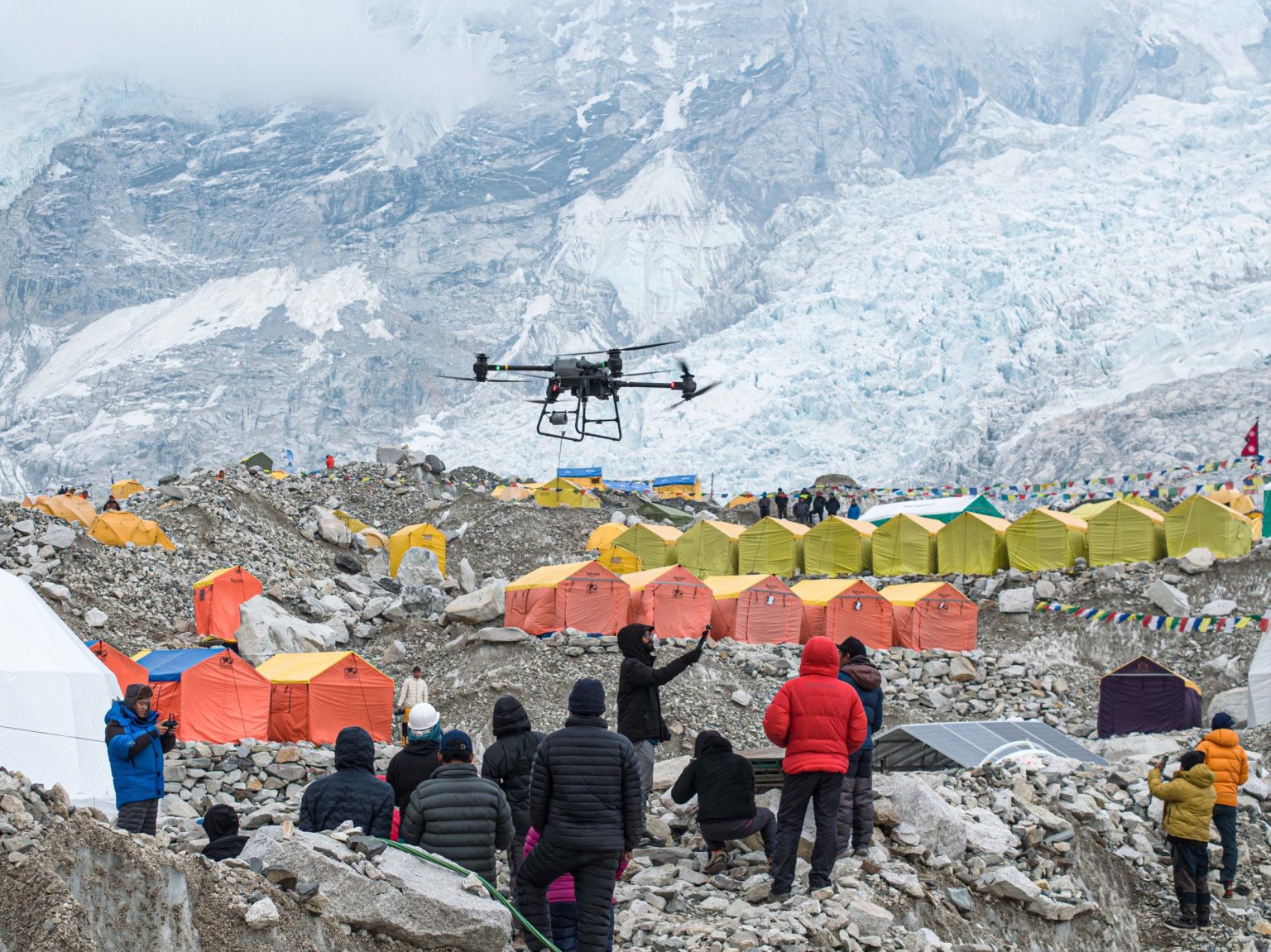DJI, a leading provider of civilian drones, successfully tested a delivery service on Mount Everest in collaboration with Nepalese drone service company Airlift, video production company 8KRAW, and Nepalese certified mountain guide Mingma Gyalje Sherpa. This partnership aimed to revolutionize Everest mountaineering logistics by using drones to transport equipment, supplies, and waste, improving safety and facilitating trash cleanup efforts. In April, a DJI drone named FlyCart 30 completed the first successful test by delivering oxygen canisters and other supplies from Everest’s main base camp to Camp 1, a distance of roughly 2,500 feet.
The camps on Everest are located at high altitudes, separated by the perilous Khumbu Icefall. Helicopters could theoretically make the journey, but they are rarely used due to significant dangers and costs. DJI engineers had to design the FlyCart 30 to withstand extreme temperatures ranging between 5 to 41 degrees Fahrenheit and wind speeds of up to 134 miles per hour. The drone, which can carry a payload weighing up to 33 lbs, had to undergo rigorous testing, including unloaded hover, wind resistance, low-temperature, and weight capacity tests, to ensure its suitability for operation in such challenging conditions.
The FlyCart 30 drone, which retails for about $20,000, has been used in various civilian missions globally, including installing solar panels in Mexico, planting saplings in Japan, assisting scientists in Antarctica, and aiding mountain rescue teams in Norway. This innovative drone delivery system could alleviate the burden on local Sherpa guides who typically transport supplies and clear trash on Everest, tasks that have become increasingly challenging due to overcrowding on the mountain. With the drone’s ability to transport supplies quickly and efficiently, it can significantly reduce the risks faced by guides while also contributing to the cleanup efforts on the mountain.
Guides on Everest face hazardous conditions while trekking through the Khumbu Icefall, often with long hours spent carrying heavy loads in freezing temperatures. Mingma Gyalje Sherpa, a mountain guide with Imagine Nepal, highlighted the dangers and challenges faced by guides in transporting supplies and clearing trash on the mountain. With drones capable of completing a round trip between camps in just 12 minutes, the risks to human life are minimized, and the efficiency of supply transportation and trash removal is greatly improved. Apart from safety concerns, the drone delivery system can also address the issue of trash left behind by climbers on Everest, helping to restore the mountain to its natural state.
Mountaineers ascending Everest are estimated to leave behind 18 pounds of trash on each climb, including oxygen canisters, food packaging, clothing, and human waste. Given the difficulties of garbage removal at such high altitudes, most of this trash remains on the mountain. The Fly Cart 30 drone, in its inaugural journey, picked up some of this trash and flew it back to base camp, showcasing a practical use case for DJI’s drone delivery system in tackling the problem of waste accumulation on Everest. By integrating drones into Everest mountaineering logistics, DJI aims to enhance safety, efficiency, and sustainability on the world’s tallest peak, offering a promising solution to the challenges faced by climbers and guides in the region.








